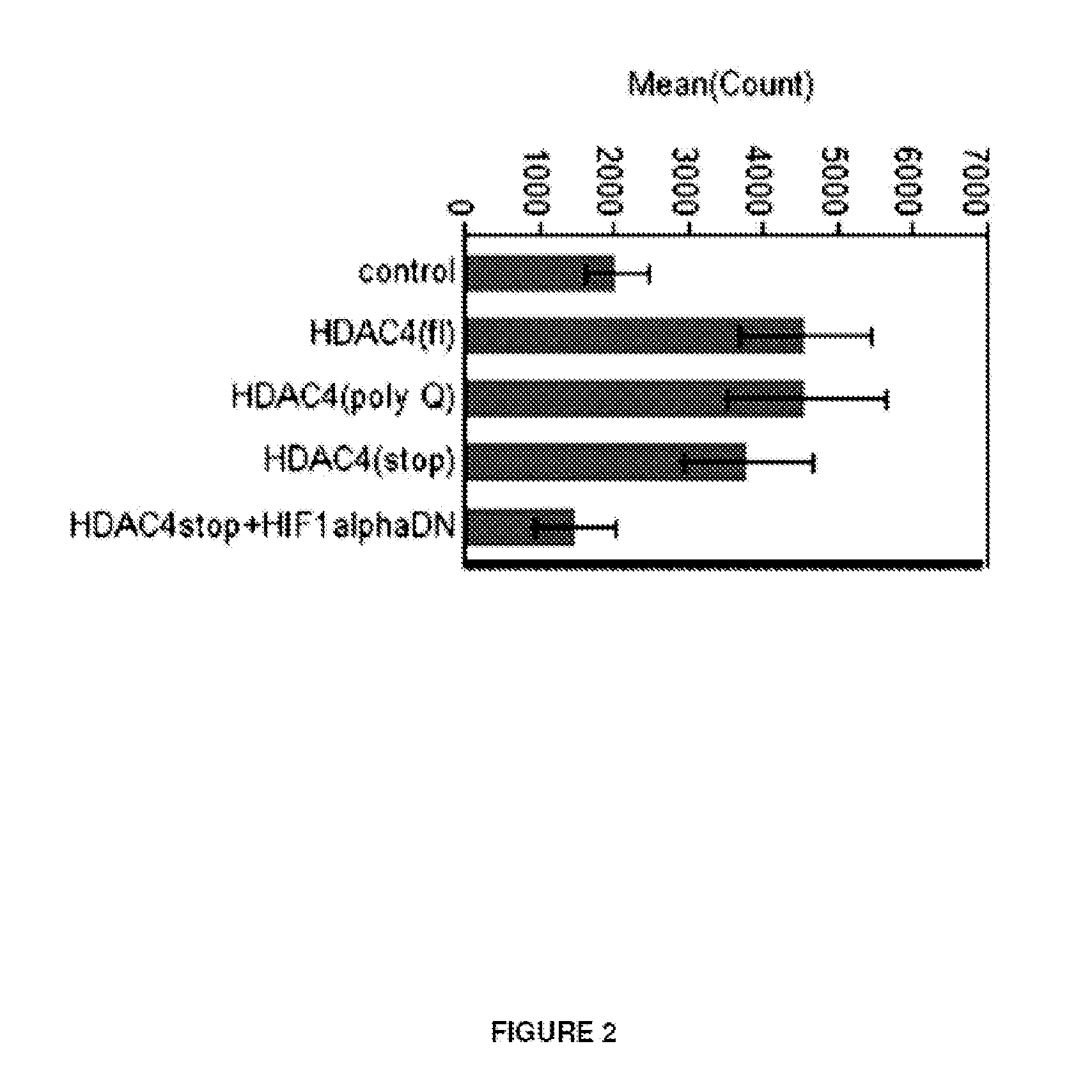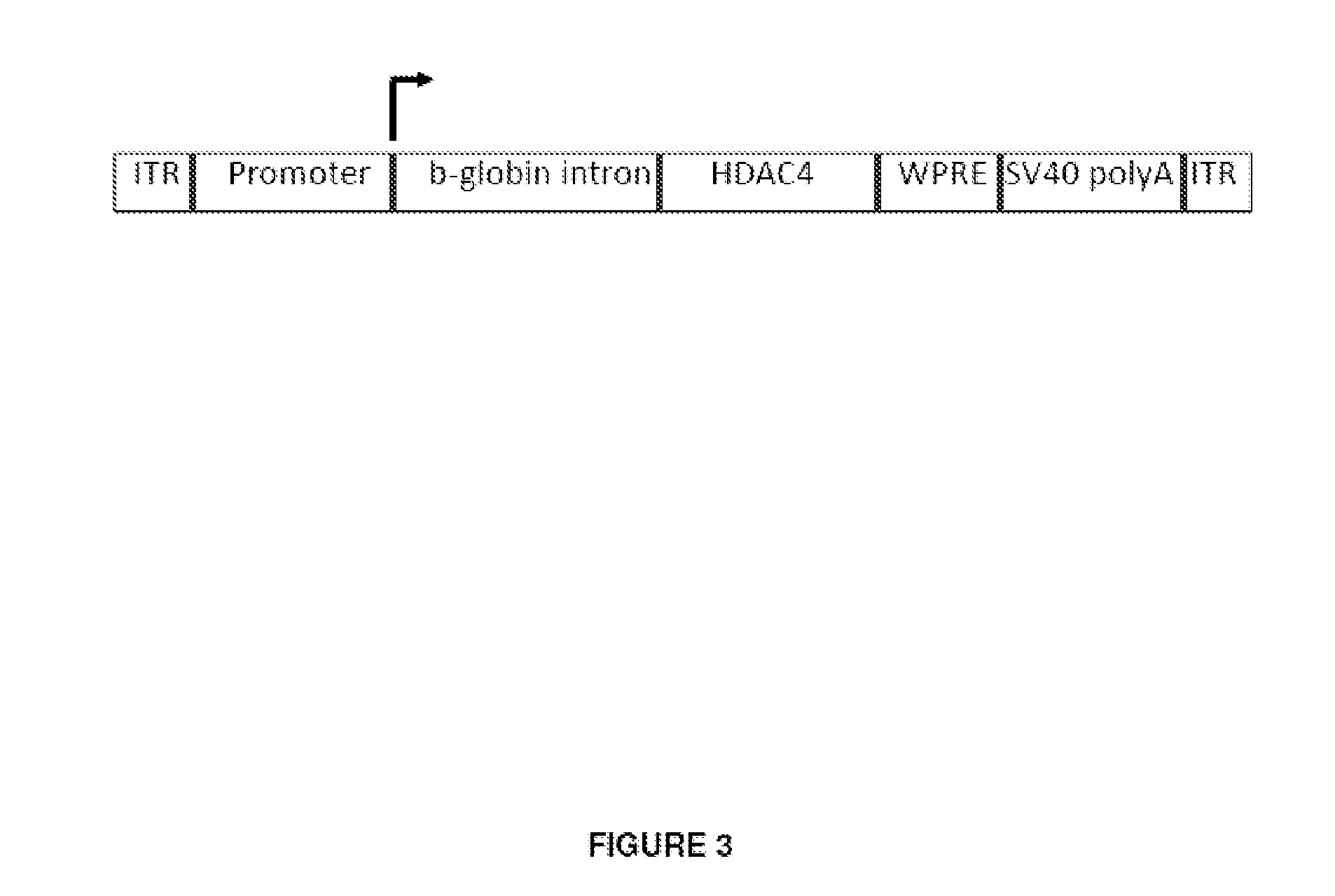Histone deacetylase compositions and uses thereof
a technology of histone deacetylase and composition, applied in the field of histone deacetylase composition, can solve the problems of severe vision loss and blindness due to retinal cell death, loss of function, and large number of individuals over 75 years of age that lose their high acuity vision, and achieve the effect of inhibiting neuronal cell death
- Summary
- Abstract
- Description
- Claims
- Application Information
AI Technical Summary
Benefits of technology
Problems solved by technology
Method used
Image
Examples
example 1
Photoreceptor Cell Rescue by HDAC4 Gene Therapy
[0166]Previous work has demonstrated that electroporation of rods in a mouse model of retinitis pigmentosa (RP) at postnatal day 0 (P0) with full-length histone deacetylase 4 (HDAC4), including the enzymatic deacetylase domain, preserved rod survival. Indirectly, due to the lack of rod death, cones also showed greater survival (Chen B. and Cepko C. L. (2009) Science 9:323(5911):256-9; U.S. Patent Publication No. 2011 / 0268705, the entire contents of which are incorporated herein by reference).
[0167]Since electroporation does not transduce all cells, and since it may not be a suitable method for long term transduction, there is a need for alternative means of gene transfer. In particular, gene therapy directed to the photoreceptor cells can produce broader and more stable transduction. The use of gene therapy viral vectors also has the advantage of being able to transduce a wider range of species than electroporation. In addition, gene th...
PUM
| Property | Measurement | Unit |
|---|---|---|
| volume | aaaaa | aaaaa |
| volume | aaaaa | aaaaa |
| volume | aaaaa | aaaaa |
Abstract
Description
Claims
Application Information
 Login to View More
Login to View More - R&D
- Intellectual Property
- Life Sciences
- Materials
- Tech Scout
- Unparalleled Data Quality
- Higher Quality Content
- 60% Fewer Hallucinations
Browse by: Latest US Patents, China's latest patents, Technical Efficacy Thesaurus, Application Domain, Technology Topic, Popular Technical Reports.
© 2025 PatSnap. All rights reserved.Legal|Privacy policy|Modern Slavery Act Transparency Statement|Sitemap|About US| Contact US: help@patsnap.com



